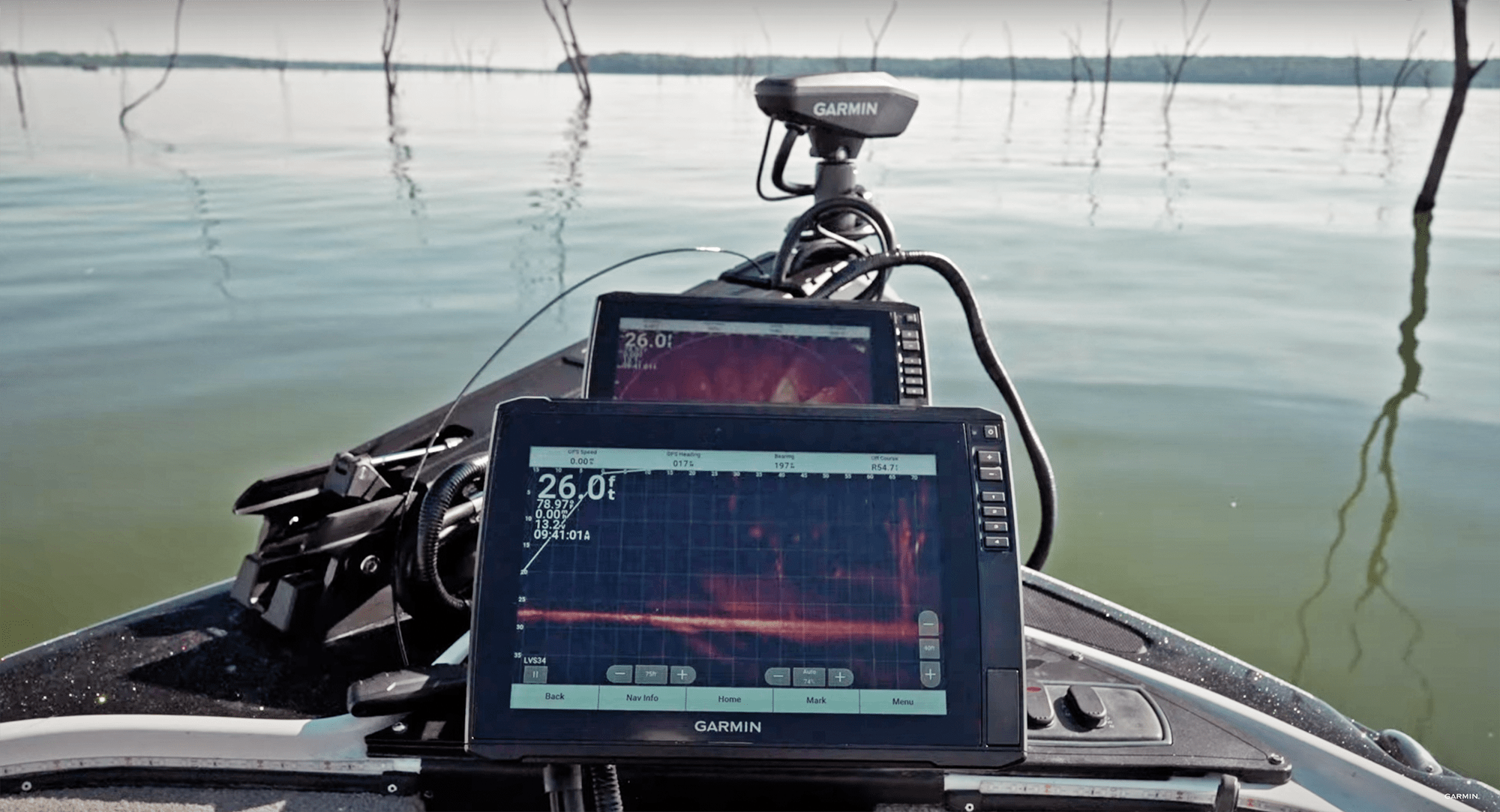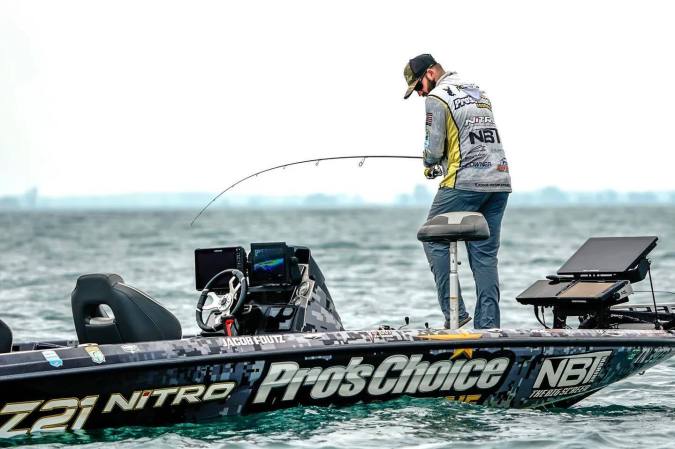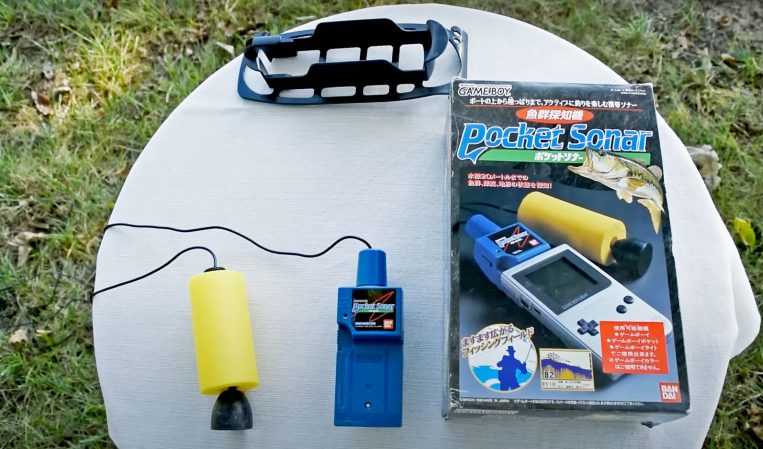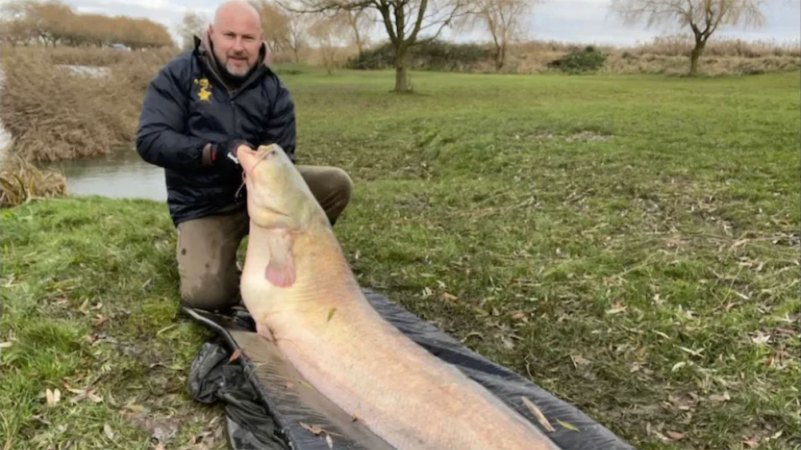There’s no stopping technology. This indisputable fact is driving news media harder than ever lately given recent advances in AI, leaving many people wondering if we’re destined to experience The Terminator in real life. Luckily, we’re not there yet, but the likelihood of us going backward — agreeing that modern tech could be so harmful that we have to stop trying to make it better — is extremely unlikely. Never in history have we decided computers are fast enough, cell phones are smart enough, or TVs are clear enough. Nothing in our lives is immune to technological one-upmanship, and fishing is no exception.
Since the first hunter-gathers caught fish for sustenance, anglers have been trying to make themselves more efficient and successful on the water. And I’m certain that with each advance there was a period when those without the latest-and-greatest called the hottest technology a crutch for lesser anglers that were lacking skill and intuition. Still, over time things like sonar and electric trolling motors became commonplace — routine tools used by everyone on the water.
Until 2018, no fishing technology had advanced so far that a genuine fear emerged over its potential to alter fisheries and the entire sport for the worst, but that’s exactly what’s happening with forward-facing sonar. Recently, the issue has come to a head after the technology was banned in a popular bass tournament. The implications of that decision could alter the future of professional bass fishing, but the cases both for and against forward-facing sonar are anything but cut and dry.
About Face
All three major marine electronics brands — Humminbird, Lowrance, and Garmin — produce a version of forward-facing sonar. Unlike traditional sonar, the transducers for this technology are mounted on the trolling motor shaft or a separate pole on the bow. Instead of just projecting a cone down below the boat, they look ahead all throughout the water column. Most impressive is their relay speed to the monitor. Whereas traditional sonar gives you a slower scrolling 2-D image, forward-facing sonar produces a real-time 3-D image of what’s ahead, more akin to a live video feed. Because there’s no delay in the signal, anglers can spot a fish, cast to it, and watch it react on the screen. This has earned the practice the nickname “video game fishing.”

The technology also allows users to identify submerged structure very quickly, and, perhaps most controversially, to find and successfully target fish suspended in open water — a skill that many anglers have never tried to learn, and one that’s taken the pros many years to master.
According to the Beaumont Enterprise, Randy Despino, the organizer of the Despino’s Tire Service “Fishing For Kids” charity team tournament to be held on Toledo Bend Reservoir in March 2024, officially banned the use of forward-facing sonar to level the playing field. Per the article, Despino, who is also a tournament bass angler, posits that nowadays, if you don’t have this technology, you are automatically handicapped so badly that you simply can’t compete. There’s compelling support to back up his theory.
In February of 2023, pro angler Tyler Rivet took first place at a Bassmaster Elite event on Florida’s Lake Okeechobee. He did this, however, by skipping out on fishing the massive, world-famous lake entirely and running up the Kissimmee River. Rivet claims that at the end of his final day of practice, he went up the river to mess around with crappies. Lo and behold, he started picking up bass on his forward-facing sonar and ended up fishing there during the tournament and winning. Here’s where opinions start to fly.
Without the technology, would he have found those bass? Regardless, does Rivet’s reliance on forward-facing sonar at a venue where most anglers don’t seem to use it make him the smartest guy in the tournament or the outcast? The answer, if there is one, is complicated.
Lost & Found
The mudslinging over forward-facing sonar might be the rowdiest in the world of professional bass angling, but it certainly spills over into other fisheries. In Australia, for example, the use of this tech to target Murray cod has drawn so much ire in some circles that it’s spawned Instagram accounts like Livescope Losers Downunder that are devoted to bashing anyone — especially perceived fishing “influencers” — who uses it to catch one of these goliaths. American muskie anglers are also frequent victims on this page.
Why the rage? Because muskies and Murray cod are historically considered two species that must be earned through merit and time put in, much of which is spent patterning and locating them. But with forward facing sonar, the argument is that you cut out the need for much of the hard work that makes victory so much sweeter. With forward-facing sonar, you can roll up to any bank, hole, or piece of structure and know instantly if there’s a cod or muskie home, and even get a pretty good idea of its size. Muskies are the “fish of 10,000 casts” because you often need to make that many before your lure even ends up in front of one, but that’s not the case if you have forward-facing sonar.
If, perchance, you happen to now be in the camp that believes forward-facing technology diminishes the achievement of catching a massive muskie or Murray cod, hold the phone. Remember that a fish on a screen is not the same as a fish in the boat. Just because you can locate fish quickly does not mean you have the skills to catch the fish you found. This is the hill that most pro forward-facing anglers will die on, and they’re not wrong.
Getting back to Tyler Rivet and his win on Okeechobee, it couldn’t have been achieved if he didn’t have the skills to determine what to tie on to fool those bass popping up on his screen. Read through enough negative comments on social media and you’ll quickly get the sense that many people — often those who do not have or cannot afford this $20- to $30,000 technology — act as though simply having it on your boat instantly transforms you into an unstoppable, can’t-miss angler. That’s simply not true.
Shop Talk
In the fishing world, the term “Photoshopped” is thrown around all the time. It’s become part of our common vernacular, and any time we want to pooh-pooh someone’s big fish or claim that the lure hanging out of its mouth didn’t catch it, we drop “Photoshopped” in the comments. The reality? Photoshop is one of the most complex graphics programs ever made. I studied it from senior year of high school through college and while I might be better at using it than a lot of folks, I’m far from a pro. There are people who earn thousands of dollars making composite images so good that it would be nearly impossible for you or me to catch that they’re fakes. But the guy who just posted a striper on Facebook and claimed it was 50 pounds likely isn’t one of them, especially if the photo doesn’t look off in any way. The same logic applies to forward-facing sonar.
Any angler who has it or has been on a boat equipped with it will tell you it’s not exactly intuitive. It takes time and practice to master. With that in mind, Randy Despino didn’t ban it from his tournament because he considers it cheating. He banned it because he recognizes that those who have it and know how to use it well typically have a financial advantage. Is it fair to have to compete with an angler who could afford this expensive technology when you couldn’t? Is it fair to compete against an angler who got it free from a sponsor when you don’t have that same opportunity? On the reverse side, is it fair that a bass pro who embraced forward-facing sonar early and has spent years really dialing it in cannot use their knowledge?
To try to keep everyone happy, Despino is allowing the use of the technology during practice days, but not tournament days. This could become the short-term model that pervades the tournament world, as another issue facing the sport is that the use of forward-facing sonar in B.A.S.S. and Major League Fishing circuits is hooking fewer viewers.
Survey Says
Gerald Swindle is one of the biggest names in professional bass fishing, and he has legions of fans. In August of 2023, he posted a video on his Facebook page laying out the results of an informal survey he conducted on social media. He asked his followers to let him know if they enjoyed watching pro anglers using forward-facing sonar in tournaments. (Keep in mind that he was not asking if they liked or disliked the technology, but simply if their attention was held when they kicked back on the couch to watch a tournament where most or all of the highlighted anglers were using forward-facing sonar.) A whopping 72 percent of Swindle’s fans said no, they did not enjoy watching pro anglers using forward-facing sonar.
Having screened footage of the practice in action, I can understand this response. Professional bass fishing is a sport that relies on eyeballs tuning in and fans showing up at events to maintain profitability. It’s no different than any pro football or baseball league. But as forward-facing sonar becomes more and more prevalent among top tier pro anglers, what fans end up watching on TV is a guy on a boat watching TV. Those devoted to the technology often end up glued to that screen all day. The argument is that this robs viewers of the action of changing lures to pattern fish and searching with casts until you hit pay dirt. The element of surprise you get when a frog is skipped under a dock and exploded on after the last five docks produced nothing isn’t there when you know the target is present and the bite is coming. From a pro’s perspective, of course, it’s hard to pass on this advantage when you have sponsors to keep happy and a family to feed by fishing.
In response to Swindle’s video, bass pro Randy Blaukat took it a step further and suggested that not only does forward-facing technology need to be banned in tournament angling to keep the fans engaged, but it’s also doing nothing to help the next wave of anglers. “It takes away the mystery and magic of fishing,” Blaukat says. “Which once you do that, once you take away the unknown from fishing, you lose everything that fishing’s about.” Furthermore, Blaukat suggests that the electronics companies back off with forward-facing sonar, but that’s very unlikely to happen.

I’m just old enough to remember when GPS became available to recreational boaters. My family had an ancient 27-foot Penn Yan at the Jersey Shore, and it had a Loran-C unit on the bridge. A well-to-do friend with a boat in the same marina got a GPS unit first, and I remember my dad being mesmerized by it. At the time, it seemed so out of reach for us and our boat. Now we have a GPS in our pocket 24/7. From this perspective, forward-facing sonar is so controversial because it’s incredibly powerful but not yet attainable for the average “weekend warrior.”
In time, though, I think that’s likely to change. A case in point: Just five years ago, it was rare to see a saltwater boat where I live that had a Spot-Lock trolling motor — another pricey accessory that garners its own share of hate for making pounding offshore bottom structure effortless. Now I see them mounted on everything from brand new skiffs to 90s-era beater center consoles. Technology gets less expensive the longer it’s around, and it’s reasonable to assume that in the relatively near future, you won’t be able to buy a new bass boat that doesn’t have forward-facing sonar. In time, those new boats reenter the market as used boats and eventually this technology becomes standard.
Until it’s ubiquitous, though, what do you do? The only immediate options seem to be either banning forward-facing sonar in tournaments entirely, or insisting that every boat fishing the event has it whether the angler onboard chooses to use it or not.
Generation Gaps
I’m not a tournament angler, but as a devout recreational angler here’s my take. I believe that to win at fishing and grow confident in your abilities, you must lose often. There is far more to learn from tough days on the water than from the ones where it seems you can do no wrong and fish are just jumping into the boat. We cannot catch a fish if our bait or lure doesn’t wind up in front of its face, so, by my reckoning, the harder skill to master — or maybe the most important skill — is putting yourself where the fish are consistently. To do this we make mental notes and connect dots over time. We return to the same areas under a variety of conditions. Sometimes your favorite rock pile produces, other times it doesn’t, but win or lose, this is how you learn to pattern fish. That’s true whether it’s by foot on a trout stream where no electronics are involved or on a bass boat running across your local reservoir. My fear is that as this technology gets even faster and smarter, the next generation may be good — possibly too good — at hooking them, but they will lack the fishing purview that I and many of you share.
If people are so upset about forward-facing sonar today, imagine how much they’ll hate the next iterations of it — or who knows, maybe lures that detect fish and swim autonomously into their mouths — 25 years from now. The future risk if this sonar becomes standard is that it nudges the sport closer to “catching” than fishing, which is on trend. Younger generations — my own kids included — are not accustomed to delayed gratification, not with how everything is “on demand” these days.
Yes, you need skills to catch what’s on that screen, but if we get to a point where the majority of anglers are casting to fish every single time they’re on the water regardless of conditions or season (even when the fish won’t feed), then you’re robbing those fish of respite and increasing pressure on them. Mounting pressure, by the way, is something anglers at large have been complaining about since long before forward-facing sonar hit the scene. Fisheries managers and state agencies will have to adapt their regulations to ensure that gamefish fisheries are healthy and sustainable into the future.
But I’m not going to lose a wink of sleep over forward-facing sonar. Because technology doesn’t stop if consumers are buying, and there’s nothing any of us can do about that. My feeling that the more work and time you put into your fishing, the more rewarding each victory is, won’t hold water with a lot of younger anglers — nor will it mean much to a pro angler who needs to win to pay the mortgage — which I completely understand. At the end of the day, forward-facing sonar is just another new tool in the angling arsenal, and it’s up to each individual angler to decide if it would or would not enhance their fishing experience. The only thing that really matters is what you personally take away from your time on the water.









